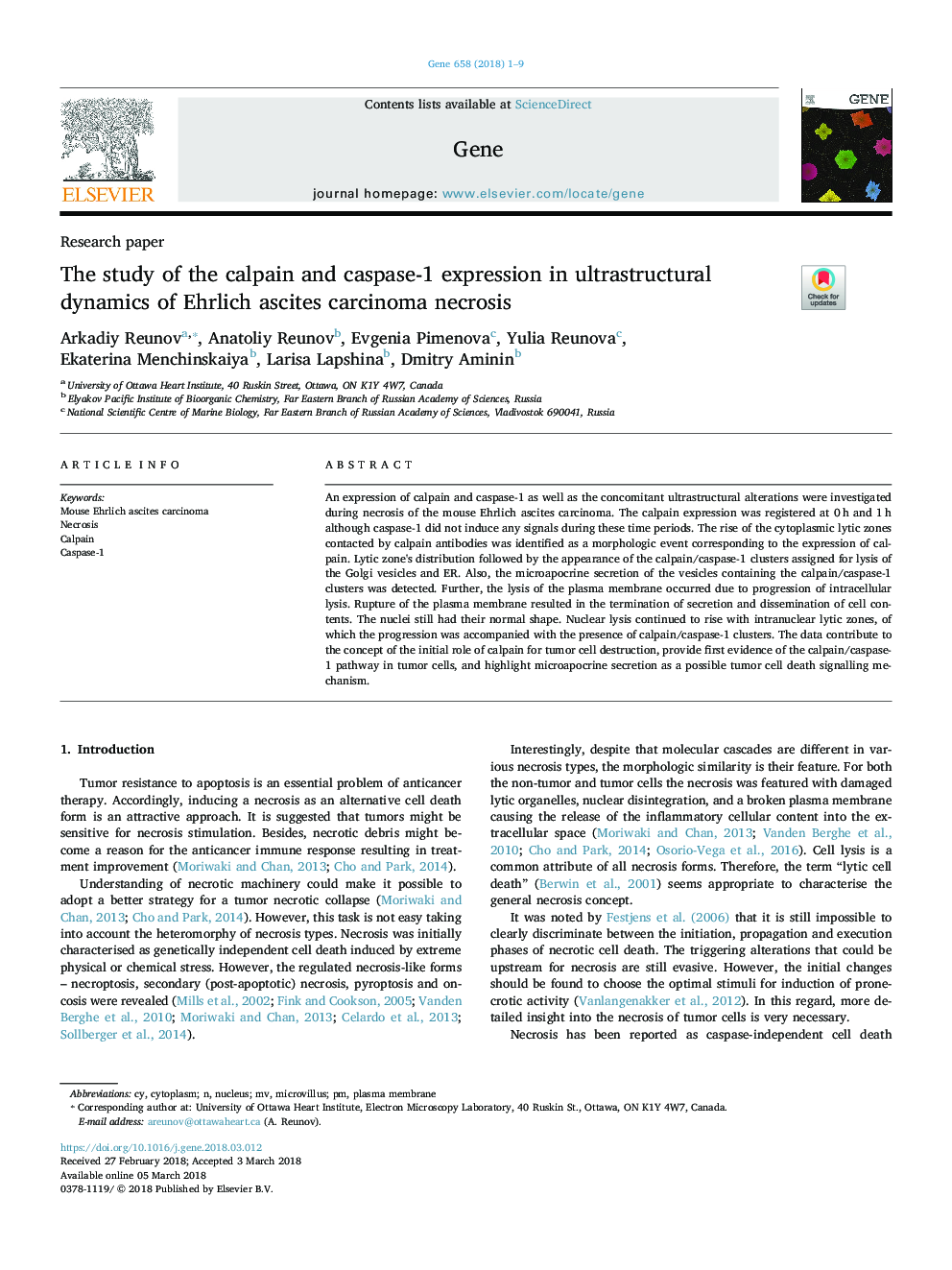| Article ID | Journal | Published Year | Pages | File Type |
|---|---|---|---|---|
| 8645223 | Gene | 2018 | 9 Pages |
Abstract
An expression of calpain and caspase-1 as well as the concomitant ultrastructural alterations were investigated during necrosis of the mouse Ehrlich ascites carcinoma. The calpain expression was registered at 0â¯h and 1â¯h although caspase-1 did not induce any signals during these time periods. The rise of the cytoplasmic lytic zones contacted by calpain antibodies was identified as a morphologic event corresponding to the expression of calpain. Lytic zone's distribution followed by the appearance of the calpain/caspase-1 clusters assigned for lysis of the Golgi vesicles and ER. Also, the microapocrine secretion of the vesicles containing the calpain/caspase-1 clusters was detected. Further, the lysis of the plasma membrane occurred due to progression of intracellular lysis. Rupture of the plasma membrane resulted in the termination of secretion and dissemination of cell contents. The nuclei still had their normal shape. Nuclear lysis continued to rise with intranuclear lytic zones, of which the progression was accompanied with the presence of calpain/caspase-1 clusters. The data contribute to the concept of the initial role of calpain for tumor cell destruction, provide first evidence of the calpain/caspase-1 pathway in tumor cells, and highlight microapocrine secretion as a possible tumor cell death signalling mechanism.
Related Topics
Life Sciences
Biochemistry, Genetics and Molecular Biology
Genetics
Authors
Arkadiy Reunov, Anatoliy Reunov, Evgenia Pimenova, Yulia Reunova, Ekaterina Menchinskaiya, Larisa Lapshina, Dmitry Aminin,
